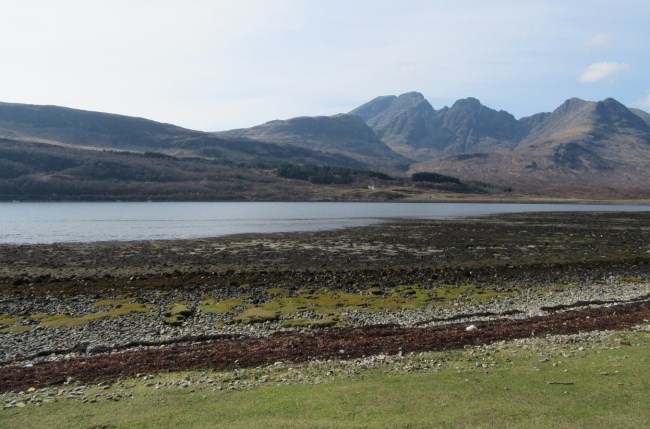60 Million Year-Old Meteorite Strike found on Skye
Published: 15 December 2017
Geologists have found evidence of a 60 million year old meteorite impact on the Isle of Skye.

Geologists have found evidence of a 60 million year old meteorite impact on the Isle of Skye.
They made the discovery while exploring volcanic rocks on the Scottish site just south of Broadford, finding mineral from a pre-historic meteorite impact that have never before been found on Earth.
The team of geologists included Dr David Brown, a senior lecturer at the School of Geographical and Earth Sciences at the University of Glasgow, discovered ejecta from a previously unknown 60 million-year-old meteorite impact.
Dr Brown said: “This is a very exciting find for our team. We found meteoritic minerals which have not previously been found on Earth.
“They were below layers of lava dated to volcanic activity as much as 61.54 million years ago. We have now found evidence of the impact at two sites on the Isle of Skye, and at another potential two sites. But we have not yet been able to measure the size of the impact site. However we do think that the impact of this meteorite could have played a part in Skye’s volcanological evolution.”
The research paper published on 14 December 2017 in the journal Geology is called “Discovery of a meteoritic ejecta layer containing unmelted impactor fragments at the base of Paleocene lavas, Isle of Skye, Scotland”.
Dr Simon Drake, the lead author and an associate lecturer at Birkbeck University of London, had been examining a thick layer at the base of a 60 million-year-old lava flow, which he and his colleagues first thought was a volcanic flow deposit called ignimbrite.
After putting it under an electron microprobe, they discovered that it, in fact, contained rare minerals from outer-space.
These minerals - vanadium-rich and niobium-rich osbornite – have never before been reported on Earth, only collected in space dust on a NASA mission.
The osbornite was discovered unmelted, meaning it is likely to be an original piece of the meteorite. The discovery raises interesting questions about whether the same ejecta is yet to be discovered elsewhere in the region known as the British
Paleogene Igneous Province (BPIP); where exactly the meteorite hit; and whether the impact of the meteorite could have triggered the outpouring of volcanic lava known to have begun at the same time.
The Isle of Skye has been well explored by geologists, and the scientists were surprised that the ejecta layer had not been identified before.
The first site of discovery was steep, rough and very boggy, which may have deterred previous researchers from exploring the layer.
First published: 15 December 2017
<< 2018 Jan-Feb

